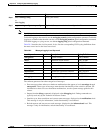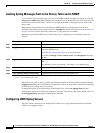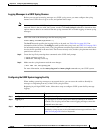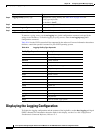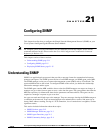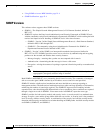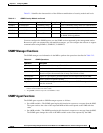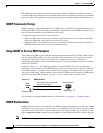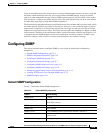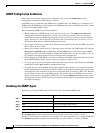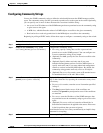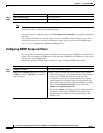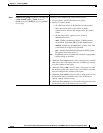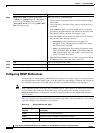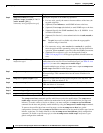
21-5
Cisco Systems Intelligent Gigabit Ethernet Switch Modules for the IBM BladeCenter, Software Configuration Guide
24R9746
Chapter 21 Configuring SNMP
Configuring SNMP
Traps are unreliable because the receiver does not send an acknowledgment when it receives a trap, and
the sender cannot determine if the trap was received. When an SNMP manager receives an inform
request, it acknowledges the message with an SNMP response protocol data unit (PDU). If the sender
does not receive a response, the inform request can be sent again. Because they can be re-sent, informs
are more likely than traps to reach their intended destination.
The characteristics that make informs more reliable than traps also consume more resources in the switch
and in the network. Unlike a trap, which is discarded as soon as it is sent, an inform request is held in
memory until a response is received or the request times out. Traps are sent only once, but an inform
might be re-sent or retried several times. The retries increase traffic and contribute to a higher overhead
on the network. Therefore, traps and informs require a trade-off between reliability and resources. If it
is important that the SNMP manager receive every notification, use inform requests. If traffic on the
network or memory in the switch is a concern and notification is not required, use traps.
Configuring SNMP
This section describes how to configure SNMP on your switch. It contains this configuration
information:
• Default SNMP Configuration, page 21-5
• SNMP Configuration Guidelines, page 21-6
• Disabling the SNMP Agent, page 21-6
• Configuring Community Strings, page 21-7
• Configuring SNMP Groups and Users, page 21-8
• Configuring SNMP Notifications, page 21-10
• Setting the Agent Contact and Location Information, page 21-13
• Limiting TFTP Servers Used Through SNMP, page 21-13
• SNMP Examples, page 21-14
Default SNMP Configuration
Table 21-3 shows the default SNMP configuration.
Table 21-3 Default SNMP Configuration
Feature Default Setting
SNMP agent Enabled.
SNMP community strings Read-Only: Public
Read-Write: Private
SNMP trap receiver None configured.
SNMP traps None enabled.
SNMP version If no version keyword is present, the default is Version 1.
SNMPv3 authentication If no keyword is entered, the default is the noauth (noAuthNoPriv)
security level.
SNMP notification type If no type is specified, all notifications are sent.



